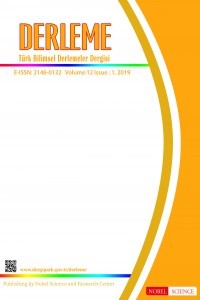Ulaşım Perspektifinden Sosyal Dışlanma Kavramının Değerlendirilmesi
Sosyal dışlanma, sosyal eşitsizlik, ulaşım dezavantajı, ulaşım yoksunluğu.
Assessment of the Social Exclusion Concept from the Transportation Perspective
- Başlangıç: 2008
- Yayıncı: Nobel Bilim ve Araştırma Merkezi Limited
Yeşil Biyorefineri için Alternatif Alt Akım Prosesi: Pervaporasyon
Esra IMAMOGLU, Fazilet Vardar SUKAN
Yeni Nesil DNA Dizileme Teknolojileri ve Bitkilerde Kullanımı
Dicle DÖNMEZ, Özhan ŞİMŞEK, Yıldız Aka KAÇAR
Ulaşım Perspektifinden Sosyal Dışlanma Kavramının Değerlendirilmesi
Seher ÖZKAZANÇ, Fahriye Nihan Özdemir SÖNMEZ
Ulaşımda Bisikletin Yeri ve Erzurum Teknik Üniversitesi Kampüs Alanı Bisiklet Yolu Önerisi
Fatma Ekmekyapar TORUN, Muhammed Yasin ÇODUR, Züleyha BİNGÜL
Dışsal Uygulanan Gibberellinlerin Meyve Türlerinde Tohum Çimlenmesi Üzerine Etkileri
Aysun CAVUSOGLU, Melekber SULUSOGLU
Ayla TÜZÜN, Havva Gül MURAT, Gözde BİLGİLİ
Antosiyanin Pigmentlerin Biyokimyası ve Analizi
Toprak Tuzluluğu ve Tuzluluğa Bitkilerin Dayanım Mekanizmaları
Yabancı Otlarla Mücadelede Allelopatinin Kullanımı
Nilgün ARIKAN, İ. Özer ELİBÜYÜK
Kentsel Alanlarda Biyolojik Çeşitliliğin Sürdürülebilirliği ve Koruma Yaklaşımları
